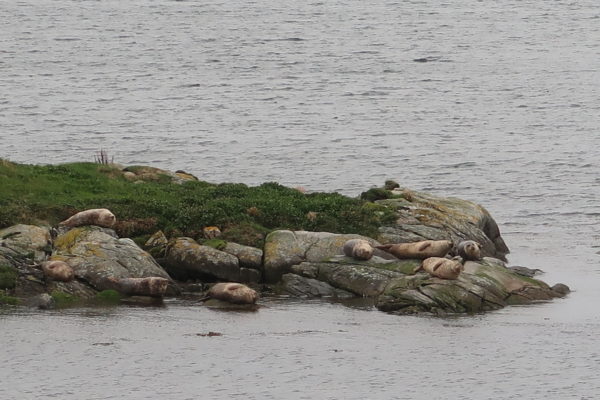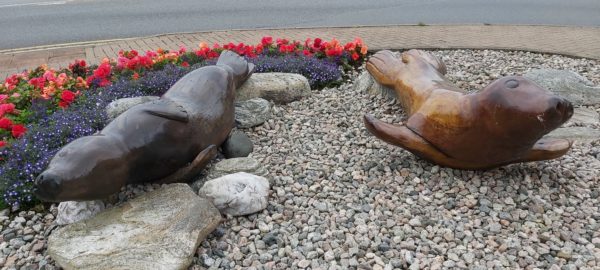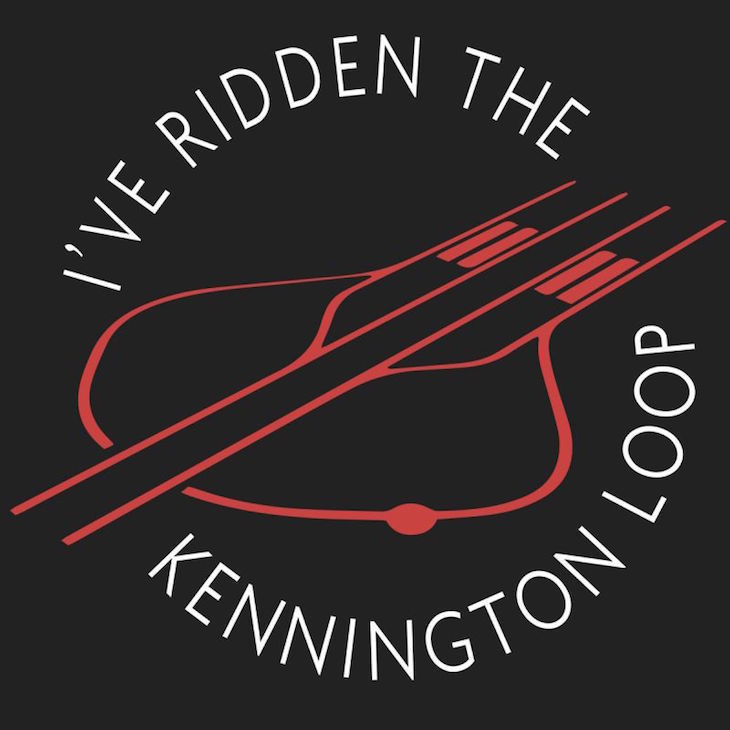Tadhail air Ghetto na Gàidhlig – Bella Caledonia
Powered by WPeMatico
Trusaiche blogaichean
Tadhail air Ghetto na Gàidhlig – Bella Caledonia
Powered by WPeMatico
Òraidean mar chuimhneachan air Colmcille, 1500 an dèidh a bhreith. Feasgar ann an Gàidhlig agus ann an Gaeilge.
Bidh feasgar sònraichte againn airson Bliadhna Chaluim Chille a chomharrachadh le òraidean sa Ghàidhlig ’s Gaeilge. Mòran taing do Chonradh Na Gaeilge ’s dhan Lòchran airson am feasgar seo a chur ri chèile còmhla rinn.
An Dr Geraldine Parsons, (O. Ghlaschu), Colm Cille agus Fionn mac Cumhaill: spéis sa naomh sa Luath-Fhiannaíocht (an Gaeilge)
An Dr Brian Lacey, Colmcille: An Oidhreacht Seandálaíochta (an Gaeilge)
An t-Oll. Lillis Ó Laoire, Colmcille i mBéaloideas na hÉireann le béim speisialta ar Thír Chonaill (an Gaeilge)
An Dr Aonghas MacCoinnich (O. Ghlaschu), Ceanglaichean Ruairidh Mòr MhicLeòid na Hearadh ri Èirinn, c. 1590-1626 (ann an Gàidhlig)
Màrtainn Mac an t-Saoir, Tobar an Dualchais: MacMhuirich Stadhlaigearraidh am beul nan Daoine (an Gàidhlig)
An t-Oll. Conchúr Ó Giollagáin (O. G. is nan E.), Dìleab gun dùil: Sìobhaltachd nan Gàidheal 1500 bliadhna air adhart bho linn Cholm Cille (ann an Gàidhlig)
| Àm: | 2:00f – 5:00f, DiSathairne 2ⁿᵃ dhen Dàmhair |
| Àite: | Coinneamh tro mheadhan Zoom. Facal-faire: ri thighinn |
| Cànan: | Gàidhlig ’s Gaeilge |
Tadhail air Comann Gàidhlig Ghlaschu
Powered by WPeMatico
Le lasairdhubh
Tha seo dìreach sgoinneil! Chaidh am program seo a dhèanamh le Cass Ezeji, agus thachair mi an toiseach ris an obair aice nuair a leugh mi an t-alt drùidhteach a sgrìobh i ann an Scottish Affairs o chionn greis. Tha coltas a cheart cho cumhachdach air a’ phrogram seo. Canar gun tèid a sgaoileadh tràth an ath mhìos, agus tha mi a’ dèanamh fiughair mhòr, mhòr ris.
Tadhail air Air Cuan Dubh Drilseach
Powered by WPeMatico
Nuair a thòisich mi am bloga seo bho choinn fhada air an t-saoghal, b’ e an t-amas a bh’ agam a dhol air gach rathad-iarainn ann an Alba – beag is mòr.
Nis, tha e meadhanach furasta a dhol air gach rathad-iarainn mòr (ma tha an tìde agad) ach chan eil e idir cho furasta a dhol air gach rathad-iarainn beag. Bidh meanbh-rathaidean-iarainn (miniature railways) a’ tighinn is a’ falbh meadhanach tric agus tha e gu math doirbh fios fhaighinn mu na làithean is uairean fosglaidh aca cuideachd.
Bha mi air beagan meanbh-rathaidean-iarainn nach eil ann tuilleadh, mar eisimpleir Kerr’s Miniature Railway ann an Obar Bhrothaig agus Rathad-iarainn Mhuile ach tha gu leòr ann a tha gu math ùr cuideachd.
Dh’fhosgail trì loidhnichean ùra sa bhliadhna no dhà mu dheireadh. Air a’ Ghàidhealtachd, tha loidhne ùr ann am Baile nan Granndach ann an seann Stèisean Bhaile nan Granndach an Ear. Cha robh cothrom agam a dhol air fhathast, ach tha e air an liosta!
Seo bhidio a lorg mi den loidhne ge-tà:
Ann an Siorrachd Lannraig, tha loidhne ùr ann an Clyde Valley Family Park ann an Crossford. ’S e pàirc do theaghlaichean a tha seo le go-carts is àiteachan cluich is beathaichean is eile. Mus do dh’fhosgail a’ phàirc seo ann an 2019 no mar sin, b’ àbhaist dhan Valley International Park a bhith ann – làrach le bùitean beaga agus soft play is eile aig an robh rathad-iarainn. Dhùin a’ phàirc – agus an loidhne – mu 10 bliadhna air ais. Bha an loidhne ann an cruth “dumb bell” – loidhne dhìreach agus lùb tionndaidh aig gach ceann. Anns a’ phàirc ùr, chaidh cuid de làrach na loidhne a chumail ach a-nis ’s e cearcall a th’ ann. Rud eile a tha inntinneach, ‘s e gur e trèana bataraidh a th’ ann seach trèana diosail.
Mar a bha:
Mar a tha:
Agus ann an Siorrachd Air, dh’fhosgail loidhne bheag ùr anns an Heads of Ayr farm Park is mar sin, chaidh mi ann leis na nighnean agam gus sùil a thoirt oirre.
’S e pàirc do theaghlaichean a th’ ann le dreallagan is trampoilinichean agus bàtaichean is beathaichean gu leòr bho chaoraich is gobhairean gu emu-than agus càmhalan. Tha an rathad-iarainn ann an cruth lùb le stèisean mòr, drochaid agus bogsa-siognail. Coltach ri loidhne Clyde Valley Family Park, tha an loco dealanach seach diosail.
‘S e an Tam O’Shanter express an t-ainm a th’ air an trèana agus ged nach fhacas Auld Nick no Mons Meg no duine sam bith eile bhon dàn, ’s e turas snog a bh’ ann!
Agus tha mi dìreach air ionnsachadh gu bheil loidhne ùr gu bhith a’ fosgladh ann an Ayton sna Crìochan ann an ùine nach bi fada cuideachd. Tha sin a’ dol air an liosta cuideachd.
Is math gu bheil an uiread de loidhnichean beaga ùra ann.
Alasdair
Tadhail air Trèanaichean, tramaichean is tràilidhean
Powered by WPeMatico

Òrain an ròin
Bha an ròn riamh na chreutair fìor shònraichte do mhuinntir sgìrean a’ chladaich, le iomadh sgeulachd mu ròin a thilgeadh am bian air an tràigh, a’ nochdadh ann an cruth fhear no bhoireannach brèagha. Bha fiù cuid ann a phòsadh clann-daoine, ged aig a cheann thall bhiodh iad a’ tilleadh gu muir, air an tarraing air ais le cumhachd an t-saoghail aca fhèin – coltach ris na maighdinnean-mara anns na sgeulachdan againne.
Aig an aon àm bha an ròn mar bheathach gu math cudromach dha na dearbh choimhearsnachdan seo, a sheilgeadh ròin airson na feòla, a’ chraicinn agus gu sònraichte an ola. Bha seo uabhasach prìseil, is e ga chleachdadh ann an lampaichean ach mar leigheas cuideachd. Agus marbhadh na h-iasgairean iad cuideachd gus àireamhean bhradan a ghlèidheadh.
Mar sin bha dàimh dhà-bharaileach eadar na daoine agus na ròin, an dà chuid an sealladh prataigeach agus an doras fosgailte fhathast dhan t-seann chreideamh os-nàdarra. Mar a mhothaich sinn roimhe san sgìre againne, cha robh riamh dragh sam bith do dh’iasgairean a bhith fìor chràbhach agus anabarrach saobh-chràbhach aig an aon àm.
Seo dà òran tradaiseanta glè bhrèagha mu ròin às na h-Eileanan Siar. Anns a’ chiad fhear, tha maighdeann-ròin a’ mineachadh cò às a thainig na ròin. Anns an dàrna fear tha ròn eile a’ gearan gum bi iasgairean a’ sealg agus ag ithe daoine eile, leis nach e beathaichean a th’ ann an ròin, ach daoine cuideachd.
Tha an dà chuid rin cluinntinn air YouTube amsaa, le Julie Fowlis is eile, ceanglaichean na ìsle. An dòchas gun còrd iad ribh!

Seal songs
The seal has always been a really special creature to the people of coastal areas, with many tales of seals who would cast their skins on the beach and appear in the form of beautiful men and women. There were even some who married humans, though in the long run they would return to the sea, drawn back by the power of their own world – just like the mermaids in our own stories.
At the same time the seal as an animal was extremely important to these very communities, who would hunt seals for the meat, the skin and especially the oil. This was exceptionally precious, being used not just for lamps but also as medicine. And fishermen also killed seals to preserve the salmon stock.
That meant there was an ambivalent relationship between humans and seals, on the one hand the practical aspect and on the other hand still a door left open to the old belief in the supernatural. As we’ve seen before in our own communities, the fisherfolk never had any trouble being both sincerely devout and highly superstitious.
Here are two lovely traditional songs about seals from the Western Isles. In the first, a seal-maiden explains where the seals came from. In the second, another seal complains that fishermen are hunting and eating other people, as seals aren’t animals but people too.
Both songs can be heard on YouTube etc, sung by Julie Fowlis and others – links below. I hope you enjoy them!

An Ron
“Mise nighean Rìgh-fo-Thuinn
Fuil nan rìghrean na mo chrè –
Ged a chì sibh mi nam ròn
Tha mi mòrail nam thìr fhèin.
“Tìr-fo-Thuinn mo dhachaigh dhùint’
Innis dhùthchasach nan ròn;
Caidlidh mi air leacan sàil’,
Mi fhìn ‘s mo bhàn-chuilean òg.”
A Bhana-phrionns’ a’ chuain shiar,
A bheil sgeul agad ri luaidh?
Nach inns thu dhuinn mar a bha
Mun do ghabh sibh tàmh sa chuan?
“Chaidh na geasan a chur oirnn
Rè ar beò bhith le luchd-fuath,
‘S ged a tha sinn snàmh nan caol
‘S e nàdar daonnd’ tha dhuinn dual.
“Aig tràth-marbh air oidhche fèill
Tilgidh sinn ar bèin air tràigh,
‘S cluichidh sinn nar n-òighean suairc’
A’ crathadh ar cuaillean bàn.
“Ach a-nochd tha mi nam ròn
Air an lic an còrs’ a’ chuain:
‘S e mo nàdar bhith toirt gaol,
‘S do chlann-daoine thug mi luaidh.”
“I am daughter of the King-under-Sea, Royal blood flows in my veins – Though you see me as a seal I am noble in my own land.
“Land-below-waves my prison home, Hereditary domain of the seal; I will sleep on a salt sea slab, Myself and my white-furred pup.”
O Princess of the western ocean Do you have a tale to weave? Will you tell us how it was Before you came to live at sea?
“Spells were laid upon us During our human lives by foes – Though we now swim the straits Human nature is our heritage.
“At the dead of feast-day night We cast our sealskins on the sand, Playing there as gentle maids Shaking our blonde tresses.
“But tonight I am a seal On a rock beside the sea; It is my nature to give love, And mankind I hold dear.”
+++++++++++++++++++++++++++
Òran an Ròin
Hò i hò i hì o hò I, Hò i hì o hò i ì
Hò i hò i hì o hò i
Cha robh mi ‘m ònar a-raoir.
‘S mairg san tìr seo, ‘s mairg san tìr
‘G ithe dhaoine ‘n riochd a bhìdh;
Nach fhaic sibh ceannard an t-sluaigh
Goil air teine gu cruaidh cruinn.
‘S mise nighean Aoidh mhic Eòghainn,
Gum b’ eòlach mi mu na sgeirean;
Gur mairg a dhèanadh mo bhualadh
Bean uasal mi o thìr eile.
Thig an smeòrach, thig an druid
Thig gach eun a dh’ionnsaigh nid;
Thig am bradan thar a’ chuain
Gu Là Luain cha ghluaisear mis’.
Hò i hò i hì o hò I, I was not alone last night.
Pity to be in this place where people are eaten as food
See the chief of the people Boiling hard on a fire.
I am the daughter of Aoidh son of Ewen
I was knowledgeable about the reefs
Pity the person who would hit me
I am a noble woman from another land.
The thrush comes, the starling comes
Every bird returns to its nest
The salmon comes from the sea
Until Doom’s Day I will not be moved.
++++++++++++++++++++++++++++++++++++++++
Julie Fowlis , An Ròn: https://www.youtube.com/watch?v=-pmeyFOZSfQ
Julie Fowlis, Òran an Ròin: https://www.youtube.com/watch?v=7DbEDIKh0hI
Emma NicLeòid, Òran an Ròin: https://www.feisean.org/fuaran/gd/oran-an-roin/

Tadhail air seaboardgàidhlig
Powered by WPeMatico
Chan ann tric a thig na prìomh rudan anns a bheil ùidh agam còmhla.
Tha loidhne tiub agus stèisean ùr gu bhith a’ fosgladh ann an Lunnainn aig deireadh na mìos seo – leudachadh air an Northern Line gu Battersea Power Station.
Tha mi daonnan toilichte nuair a dh’fhosglas rathaidean-iarainn ùra ach tha ceangal sònraichte aig seo ri ceòl roc.

Fiù’s mur eil thu air Animals le Pink Floyd (1977) a chluinntinn, tha mi cinnteach gum faca tu an còmhdach – fear de na dealbhan còmhdaich LP as suaicheanta riamh!

San dealbh, chithear muc plastaig os cionn stèisean cumhachd Battersea. ‘S e muc a bh’ ann a chionn ’s gun robh an clàr stèidhichte air an leabhar Animal Farm le George Orwell, (a tha a-nis ri fhaighinn sa Ghàidhlig – taing Aonghas Phàdraig Caimbeul!)
Leis an fhìrinn innse, chan e clàr sona a th’ ann idir – tha an cuspair gu math dorcha, tha an ceòl gu math gruamach agus aig an àm, is gann gun robh Roger Waters agus David Gilmour, prìomh sgrìobhadairean òrain a’ chòmhlain fiù’s a’ bruidhinn ri chèile. Ach aig an aon àm, tha an ceòl cho math is gu bheil e daonnan a’ toirt togail dhomh, gu h-àraid an t-òran Dogs – air a bheil fear de na solothan giotàir as fheàrr riamh.
Dhùin an stèisean cumhachd ann an 1983 ach thathar a-nis a’ togail flataichean is oifisean san togalach agus tha feum air deagh sheirbheis còmhdhail dhan sgìre.
Nis, tha an dà chuid an clàr agus an stèisean cumhachd fhèin cho suaicheanta is gu bheil mi an dùil is an dòchas gum bi muc ainmeil Pink Floyd a’ nochdadh san stèisean ann an dòigh air choireigin! Mural le mucan ann is dòcha?
Chì mi nuair a thèid mi ann!
Tha mi gu bhith a’ dol gu Lunnainn air an ath mhìos agus thèid mi air an loidhne ùr fhad ’s a bhios mi ann is sgrìobhaidh mi mu dheidhinn an seo.
Agus fhad’s a bhios mi ann, tha mi an dùil fear de na tursan rèile as ainmeile am measg nan trainspotters a dhèanamh. Seo an Kennington Loop – turas goirid is toirmisgte ach gu math mòr-chòrdte do dh’aficionados Underground Lunnainn! Tha i cho ainmeil is gu bheil lèine-t fiù’s ann airson innse dhan t-saoghal gun do rinn thu e!
Dè th’ anns an lùib?
Bidh a’ mhòr chuid de na trèanaichean air meur-loidhne Charing Cross an Northern Line a’ crìochachadh ann an Kennington. Bidh na daoine a fàgail na trèana agus bidh an trèana an uair sin a’ tionndadh air lùb Kennington agus a’ dol gu tuath a-rithist bho stèisean Kennington. Chan eil e ceadaichte do luchd-siubhail a dhol timcheall air an lùib – ach bidh gu leòr dhaoine ga dhèanamh co-dhiù,
Feuchaidh mi ri a dhèanamh (ged a bhios an t-eagal orm gun tèid mo shadail dheth leis an dràibhear!) agus ma bhios mi soirbheachail, ceannaichidh mi an lèine-t!

Alasdair
Air m’ fòn làimh: Pink Floyd, Animals (1978), 8/10; Big Audio Dynamite, Live in Glasgow 2011 (bootleg – bha mi ann!) 9.5/10 – còmhlan cho Lunnainneach sa ghabhas!
A’ leughadh an-dràsta: Lonely Planet guide to Aboriginal Australia and the Torres Strait Islands (2001)
Tadhail air Trèanaichean, tramaichean is tràilidhean
Powered by WPeMatico
A few years ago, I had a revelation about Gaelic. I was visiting the natural history museum in London with my family at the time, back in the day when Dippy the Dinosaur was still in the Lobby.

We were in the cafè and I was waiting to order food. There were three people out front serving and there were a couple of people in the kitchen area who they were talking to via walkie-talkie.
As you’d imagine, they were talking in English but I noticed that every single one of them had learnt English as a second language.
This is of course very common in London – and indeed in most places today. We speak to second language fluent English speakers ever day and don’t think twice about it. Why? Because it’s normal!
As a Gaelic speaker, my revelation was that in a situation like this, the use of Gaelic between a group of people who are all or mainly fluent second language Gaelic speakers would be likely to be seen by some as artificial and condemned as such both by those who are anti-Gaelic and amongst some within the Gaelic community.
Of course, Gaelic and English aren’t the same thing. Gaelic is a minority language and sometimes there are different factors to be considered over and above pure communication. But not in this case. To paraphrase Fraud – sometimes a language is just a language.
I learnt Gaelic, I use Gaelic every day. There’s nothing artificial about it. And even if there was, what does it matter?
But in the Gaelic world, the need for authenticity is so great that some Gaelic spearkers not only consider learners or use of Gaelic outwith traditional Gaelic communities as artificial but even call Sabhal Mòr Ostaig, the national Gaelic college in Skye and attempts to promote Gaelic in Stornoway artificial. I’ve heard this often over the years and the social media controversy over the last few days is nothing new.
Part of the problem is a simplistic understanding of the word community. As a sociologist, I often joke “every time I hear the word community I reach for my gun”. But there is a serious point behind this. The idea that only communities of the type you get in a rural areas are real or authentic communities ignores the fact that the vast majority of people in Scotland don’t live in communities like that. And more importantly, it ignores the fact that the communities of the type perceived as authentic have actually changed a lot too.
I live in Glasgow. I don’t know my neighbours more than to say hello to. I don’t see them socially. I don’t bump into them at local events – in fact there are few local events. And this isn’t a new thing. I’m pushing 50 and the experience was largely the same for my parents who grew up in Glasgow and were born in the late 1940s. It’s certainly the experience of my children and most of their friends.
But I do live in a community – I have many friends who live in other parts of Glasgow and I see them regularly and I have a sense of community which isn’t just based on the small area I live in and based on me knowing the people who live closest to me. This isn’t individualism or being anti-social – it’s just a different type of community. A type of community which enables me to use Gaelic very regularly.
Basically, the talk about “real” communities in the Gaelic context doesn’t only hold that using Gaelic in an urban area is artificial but condemns urban community itself as being artificial. This is clearly daft particularly given that Scotland is particularly urbanised country.
And the discussion of “real” communities fails to recognise how much they’ve changed. In recent years, rural communities have become far more like urban communities due to various social changes. As Tim Armstrong has pointed out, the Gaelic community in traditional communities are becoming more like urban networks. When people are comparing Hebridean communities with new Gaelic communities, they are often comparing idealised versions of these communities or communities as they were before Internet 2.0 (and to quote Big Country’s song Beautiful People, I suspect that to some extent “things were never what they used to be”) .
In fact, differences between native speakers and fluent learners and between urban and rural communities are smaller than they’ve ever been before and they are more interlinked than ever so I think it’s time we laid all the talk of artificiality to rest once and for all.
And most important of all, languages are social and not biological. Nothing social is artificial. And even if it was, using English in new contexts would be just as artificial.
The Gaelic world is and always has been diverse and I for one welcome this.
It’s time for more Gaelic use and less judgement of who and where this it is done IMHO.
Alasdair
Tadhail air Trèanaichean, tramaichean is tràilidhean
Powered by WPeMatico
Le Gordon Wells
 Pàdruig Morrison, PhD scholar, crofter, musician, and community activist from Grimsay, talks to Gordon Wells for the Stòras Beò nan Gàidheal project.
Pàdruig Morrison, PhD scholar, crofter, musician, and community activist from Grimsay, talks to Gordon Wells for the Stòras Beò nan Gàidheal project.
We’ve added a Gaelic subtitle option on YouTube for those that wish it, which can be machine translated into multiple other languages through “Settings”. Wordlinked transcripts are also available on Clilstore.
In the first part, he recalls his family history, including his grandfather’s celebrated recordings and their importance for the preservation and transmission of Gaelic culture, and his father’s love of singing and the continuation of tradition. His own Gaelic was nurtured in the extended family and community, with the strong support of his English-speaking mother. An early interest in music was well supported through Uist schooling initially, and then intensively in Edinburgh, where he found additional impetus for his Gaelic through church and university circles. Following his father’s death, he maintained close contact with his Grimsay home, to which he always intended to return.
A wordlinked transcript alongside the embedded video is available here: https://multidict.net/cs/9686
In the second part, Pàdruig makes some comparisons between Irish and Scottish traditional music scenes, drawing on his experience of postgraduate study in Maynooth, where he noted a common preference in rural more “Gàidhealach” areas for a steady swing in contrast with urban centres like Dublin or Glasgow. Now back home in Grimsay he is busy with his croft, in addition to pursuing a PhD. The maintenance of traditional crofting skills is important to him in times of heightened environmental awareness. He is also involved in debates around access to crofts and housing for young people, especially following Covid lockdowns. He is optimistic about developing the common interest of vernacular Gaels and learners in sustaining island communities.
A wordlinked transcript alongside the embedded video is available here: https://multidict.net/cs/9686
Attentive listeners will have noticed occasional references to earlier films made in the Island Voices series, including some featuring a much younger Pàdruig, as well as his father! You can check back on these in the archives, particularly in the Series 2 Generations section.
Tadhail air Island Voices – Guthan nan Eilean
Powered by WPeMatico
‘S urrainn dhut iomadh struth video is fuaime a chur ri chèile. Glac uinneag, camara-lìn ’s a bharrachd…
Tha measgachadh fuaime cho furasta ’s a ghabhas.
Tha tòrr plugain agus roghainnean aig a’ phrògram.
Source: Fòram na Gàidhlig
Tadhail air Fòram na Gàidhlig – Naidheachdan / News
Powered by WPeMatico
Tadhail air Blog Pàrlamaid na h-Alba
Powered by WPeMatico